Best tall front door plants
Taller plants can help to frame your doorway, adding height and structure to your display. “It’s something soft,” explains Domoney. “It’s not just brickwork – it embellishes the front door.”
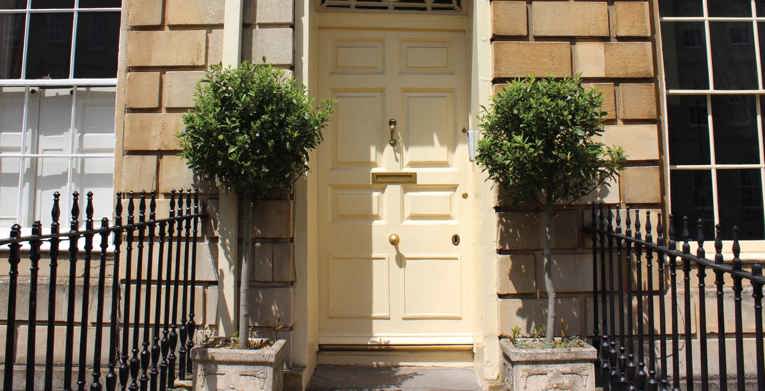
Bay trees
Bay trees have been cultivated since ancient times. The ancient Greeks used laurel wreaths, made from bay foliage, to crown winning athletes in the Olympic Games. The Romans, meanwhile, awarded them to victorious warriors and poets.
Bay trees are a popular choice for entrances because of their dark, evergreen foliage, their proclivity towards containers, and the fact that they can be clipped into smart shapes. They are also a favourite of Domoney: “They’re great, because all year round they’ll give that lush, green colour.”
Bay trees prefer a light, sunny location partially shaded will also work and require regular watering and feeding. They can survive in any aspect, and can withstand the brunt of most UK winters, but if temperatures drop below -5 degrees, wrap them or move them inside to avoid damage to the foliage.
Type of doorway: any aspect, exposed or sheltered, but with sun or partial shade
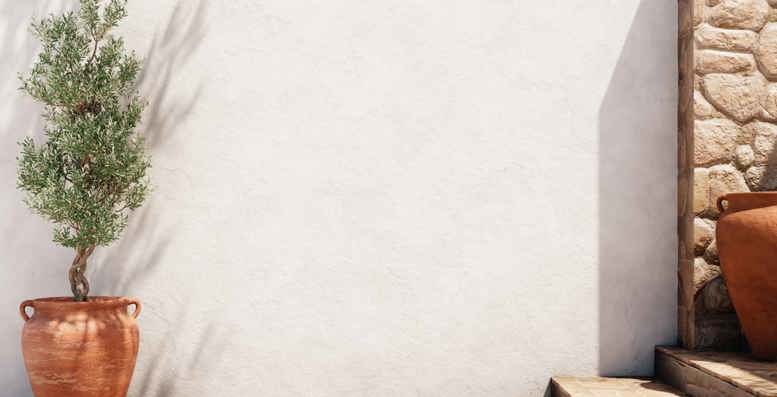
Olive tree
Bring the Mediterranean to your front door with an olive tree. These are rugged, evergreen trees with simple, silver-green leaves. Despite their warmer origins, olive trees can grow and thrive in colder UK climates – although they are unlikely to bear fruit. Their tough, adaptable nature, which even has the capacity to regenerate from the base when damaged by fire, has earned them the nickname “tree of eternity”.
Olive trees do well in containers and would suit a south-facing doorway with full sun. Keep the soil relatively dry, watering occasionally. They’ll grow slowly, reaching a maximum of 30 feet.
Type of doorway: sheltered, sunny, south-facing
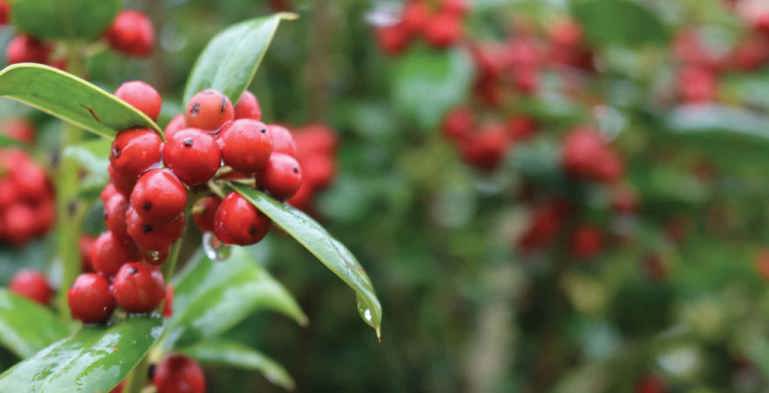
Chinese holly
Also known as horned holly, this is a slow-growing, dense shrub which will grow to around eight feet in height. With holly’s distinctive glossy, spiny leaves, the female varieties will produce white flowers which will transform into red berries around autumn. These should not be eaten and can potentially be harmful to pets.
Because of its dense foliage, Chinese holly is often used to create privacy. It is a tough, low-maintenance plant that is suitable for many different doorways, whether they are exposed, sheltered, sunny or partially shady. Plant them high, exposing the taper at the base of the trunk, and keep the soil moist but well-drained.
Type of doorway: any, with the exception of a fully-shaded door.
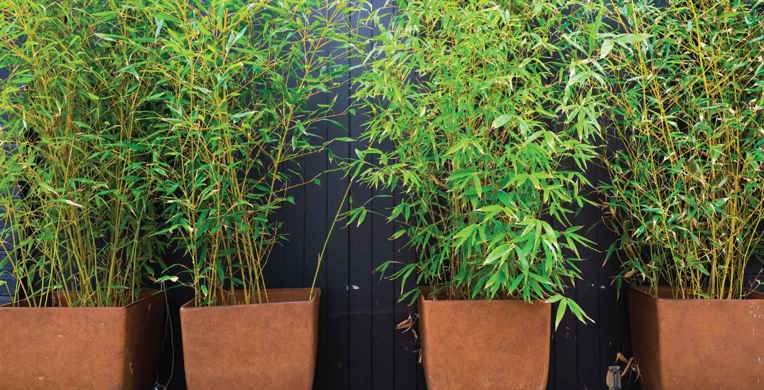
Bamboo
“Bamboo can add screening for privacy as well as structure to a doorway,” says Domoney. “They are dramatic plants – and can be a real showstopper.”
There are two main types of bamboo: running and clump-forming. Runners will spread rapidly, so it’s safest to choose a clump-forming variety which will remain more controlled. Planting bamboo in a large container will help with this: dig a hole that is twice the size of the rootball, and plant it so that the rootball sits level with the surface. Bamboo needs sun and moist, fertile soil, but will otherwise require little maintenance. If your plant does grow more than your liking, don’t be afraid to trim it back.
Type of doorway: there are varieties for most doorways. Most like sunny or partially shaded entrances
Best all-year-round front door plants
If you like the idea of having plants outside your entrance but don’t want the hassle of replacing them between seasons, here are some of the best all-year-round plants to go for.
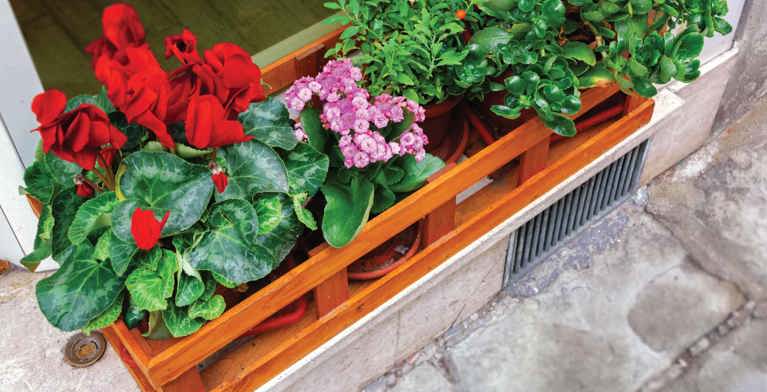
Cyclamen
Cyclamen is a popular choice for front doors because it is one of the few plants that will provide colour even in the dead of winter. Hardy cyclamen like partially shady conditions, and flower in the autumn and winter, giving beautiful pink blooms and attractive heart-shaped leaves. Do not plant them too deep, though, or they may struggle to flower. And watch out for mice or squirrels, which may try to dig up the tubers.
“It’s almost as if their leaves have been hand-painted,” says Domoney. “A little bit of lime green, a touch of silver, an emerald centre and beautiful vein markings. And then you’ve got the flowers: these upright, standard-like flowers that are swept back.”
Type of doorway: partially shaded
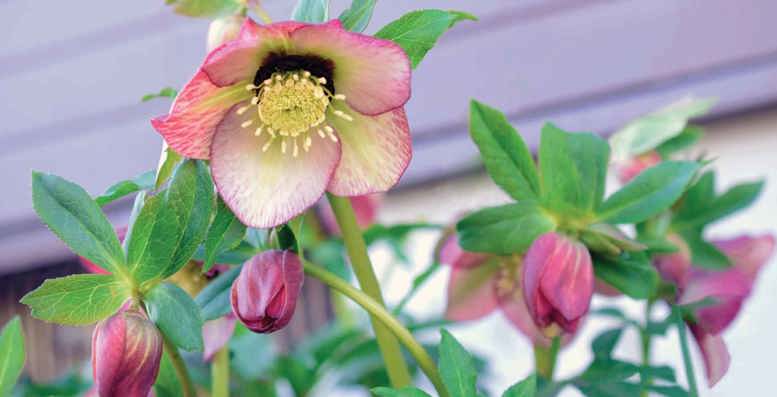
Hellebore
Like cyclamen, hellebores are a hardy perennial variety with a long flowering period. Their flowers, which can last from winter through to spring, come in white, pink, purple and green, and are set amongst rich evergreen leaves. They come in smaller varieties, while the Hellborus argutifolius and H. foetidus can both grow to around three feet. Most hellebores prefer light shade, away from extremes of light and temperature.
“The best thing about hellebores is that they flower during late autumn,” says Domoney. “Depending on the season, there’s no reason why this can’t flower well into the winter months and early in spring too.”
Type of doorway: partially shaded, no extremes, but some species differ
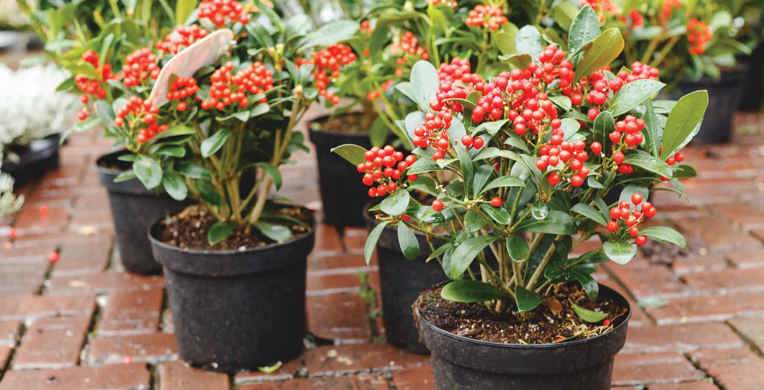
Skimmia japonica
Skimmia japonica is a low-maintenance shrub with leathery evergreen leaves. During the winter, they are peppered with tiny red buds, which bloom into white or greenish flowers in spring.
There are a range of varieties, from the popular ‘Rubella’, with hundreds of fragrant white flowers, to the ‘Fragrans’, with aromatic green leaves and tiny flowers. Skimmia japonica have the benefit of being hardy plants, suitable for doorsteps of all aspects. Plant them in rich, moist soil and keep them in spot with plenty of shade. It’s a good idea to wear gloves when handling them, and their fruits should not be eaten.
Type of doorway: Shady, suitable for all aspects
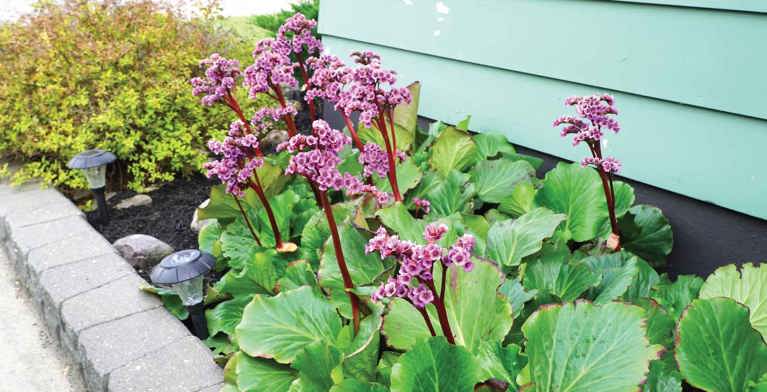
Bergenia
Known as elephant’s ears for their large, shield-shaped leaves, bergenia are tropical plants that are easy to grow and maintain. Better still, they are extremely adaptable and will thrive in sunny or shady doorsteps, even in poor soil. Their only preference is to be kept away from cold winds, and for their soil not to be too wet.
Bergenia’s glossy leaves have year-round appeal, changing colour with the seasons. In winter, their leaves can take on striking red or purple hues which will add a wow factor to your doorstep. In spring, expect clusters of flowers, usually pink or white, but occasionally red or purple. It’s a good idea to cut off any winter-damaged leaves before flowering to showcase the spring blooms.
Type of doorway: varieties for all entrance types; most can be planted in sun or shade
























